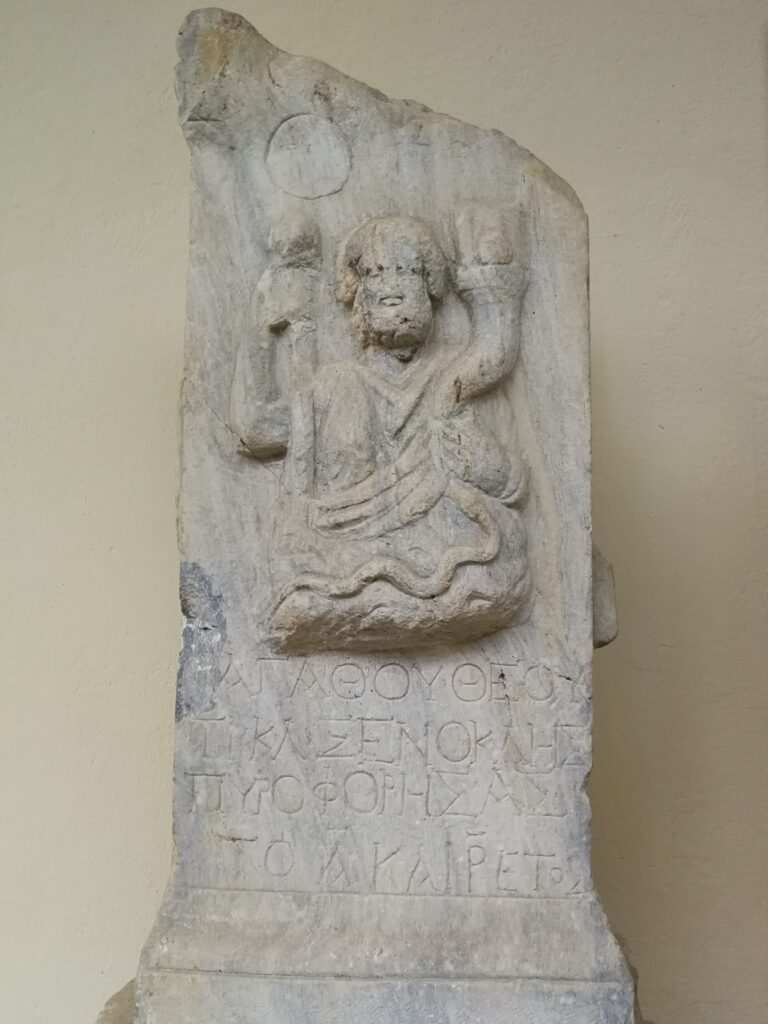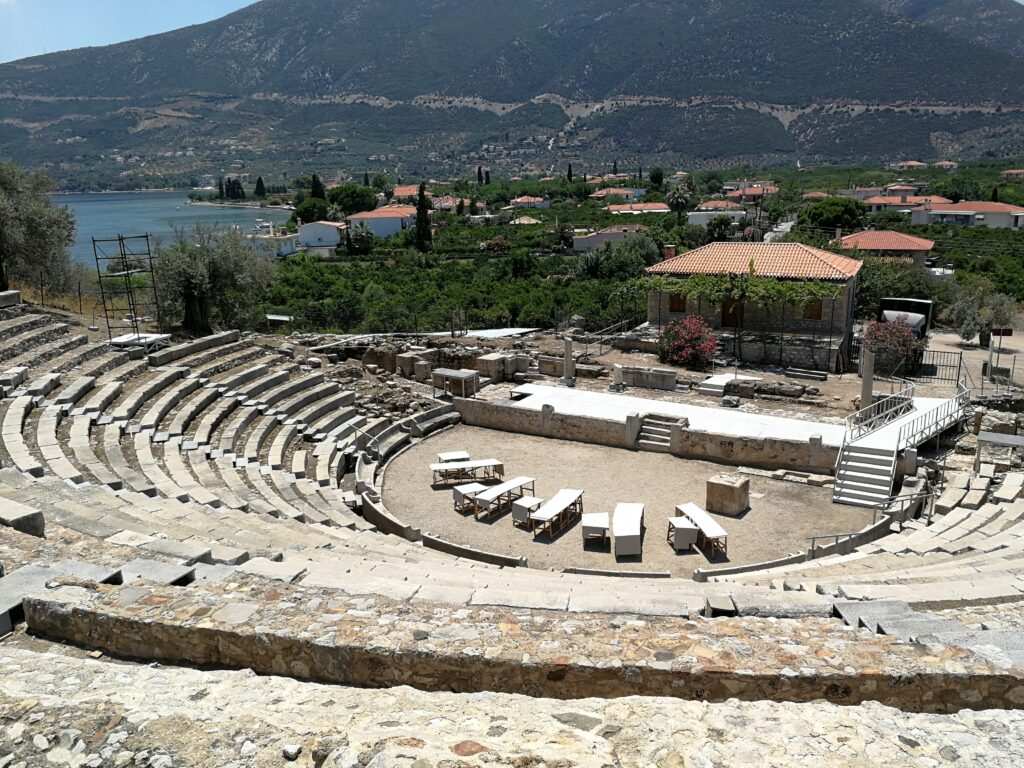Epidaurus, or Epidauros in Greek, is an ancient Greek city in Argolida located on the northeast coast of the Peloponnese. Today, the city is best known for its well-preserved theatre, which could accommodate 14,000 spectators, and for the sanctuary of the god Asclepius (Aesculapius). The association with Asclepius, the name of the city, as well as the configuration of the terrain, contributed to the Greek Epidaurus being often presented as the forerunner of our Epidaurus.
Epidaurus was a small city, a polis that gained its fame precisely because it gained prominence as the most famous treatment centre in the ancient world. According to legend, Asclepius, the son of Apollo and the Greek god of medicine, was born on Mount Titthion above the city, which is why the city became famous for his sanctuary. The mild climate, the large number of natural water sources, as well as the abundance of wild medicinal plants helped put the city on the world map as far back as the 6th century B.C.E. Over the course of the next three centuries, the sanctuary was growing in popularity; consequently, in the 4th and 3rd centuries B.C.E., the city complex underwent extensive additional construction, including the construction of the new temple of Asclepius, a large stoa, a tholos, a stadium and a theatre.
The sanctuary itself was situated in a wooded lowland area, surrounded by hills and drinking water springs. Everyone who entered the sanctuary first had to go through the process of purification with water, and then they could enjoy the beauty of that picturesque place designed for contemplation and healing. In addition to its religious quarters, the sanctuary complex also housed a stadium and a theatre due to the belief that both physical effort and cultural upliftment were viewed as an integral part of a person’s recovery. Interestingly enough, the worshippers of the cult of Asclepius used sleep as an important stepping stone towards improving health. Sleep represented a certain link between death and rebirth, so it was believed that Asclepius himself would appear to the patient in their dreams and miraculously heal them; therefore, the sanctuary also featured a lodging house which patients visited with the sole aim of spending the night within the sanctuary’s premises.
The inscriptions found in the sanctuary reveal the exact medical practices which were taking place therein. For example, the inscription on a marble votive stela made around 150 C.E. provides information on the man who had it carved, a certain Marcus Julius Apella; he had suffered from a digestive disorder and thanked Asclepius for his recovery, which was a result of a diet of bread and cheese, along with celery and lettuce. He also had to drink water with lemon, as well as milk sweetened with honey. He often took not only purification baths, but also mud bath therapy. As for the physical and intellectual exercise, he ran, walked and studied in the sanctuary library; however, the studying caused him headaches, which made him discontinue that activity.
It is a less known fact that, just 8 kilometres away from the sanctuary and its large theatre, there is another smaller theatre, situated in a part of today’s Epidaurus and discovered in the early 1970s. The theatre in question was found in a field of century-old olive trees that were relocated during the excavation. Namely, according to Greek law, all areas that contain archaeology become the property of the state, and excavations are carried out when a sufficient amount of money is procured for such endeavours, while in the meantime they remain unexcavated. The owners of the archaeological site receive a replacement plot for the one taken from them. It is for this reason that you can see the remains of pillars, inscriptions and other movable archaeological material walking along the peninsula on which the small theatre is situated; these remains, kept undisturbed in their original habitat, are still waiting for financially better times.
However, the connection between our Epidaurum and its Greek counterpart is in name only. Although there are theories that there is a Greek theatre in Cavtat which has not yet been discovered, no traces of the Greek polis have been discovered in the area so far. The only Greek artifacts found in the Cavtat area are certain ceramic finds, serving as proof of trade with Greek colonies, and the memory of the cult of Aesculapius, which spread to our region thanks to the natural wealth of the terrain and the garden containing wild medicinal plants, which is present in both cities in question.


